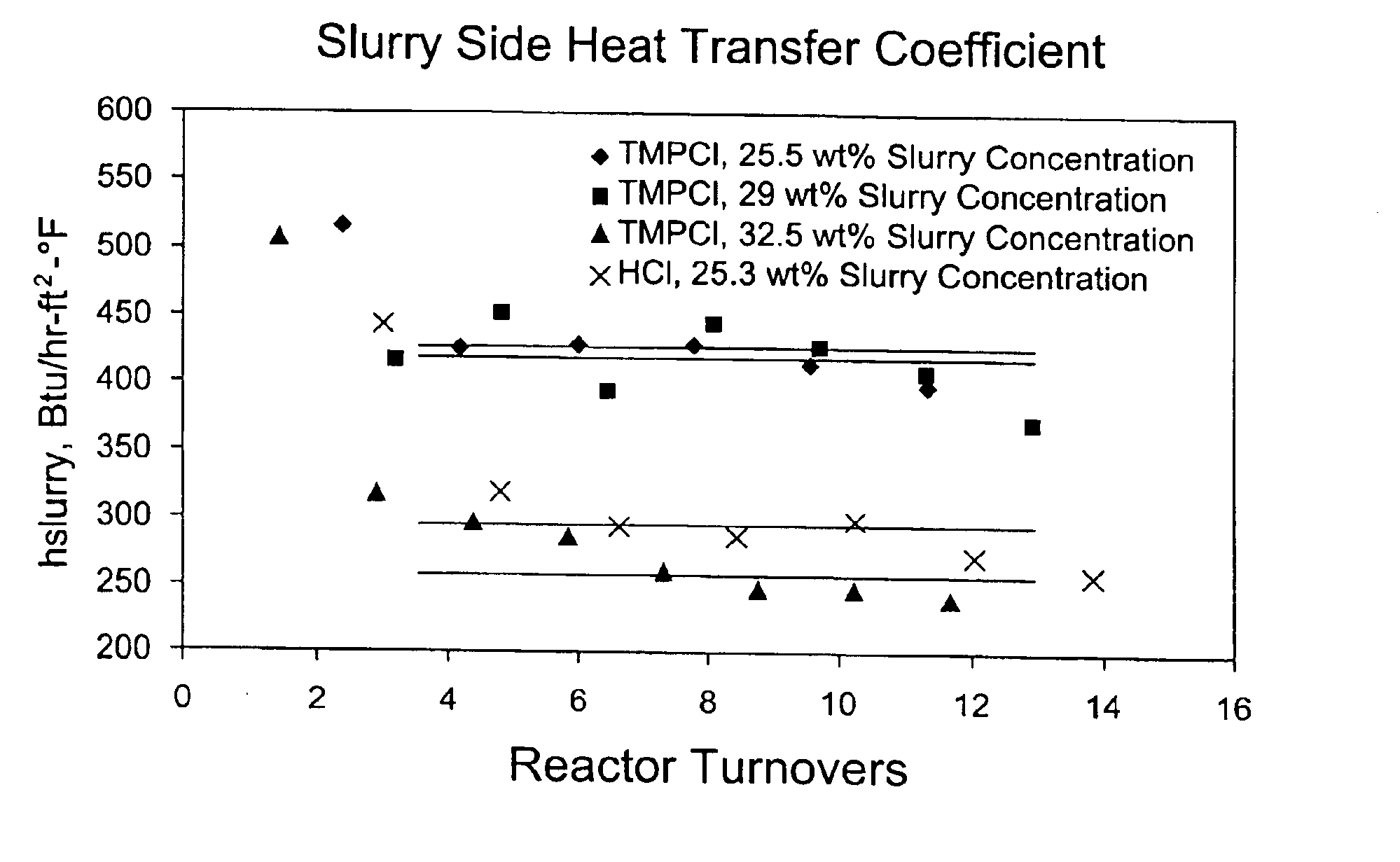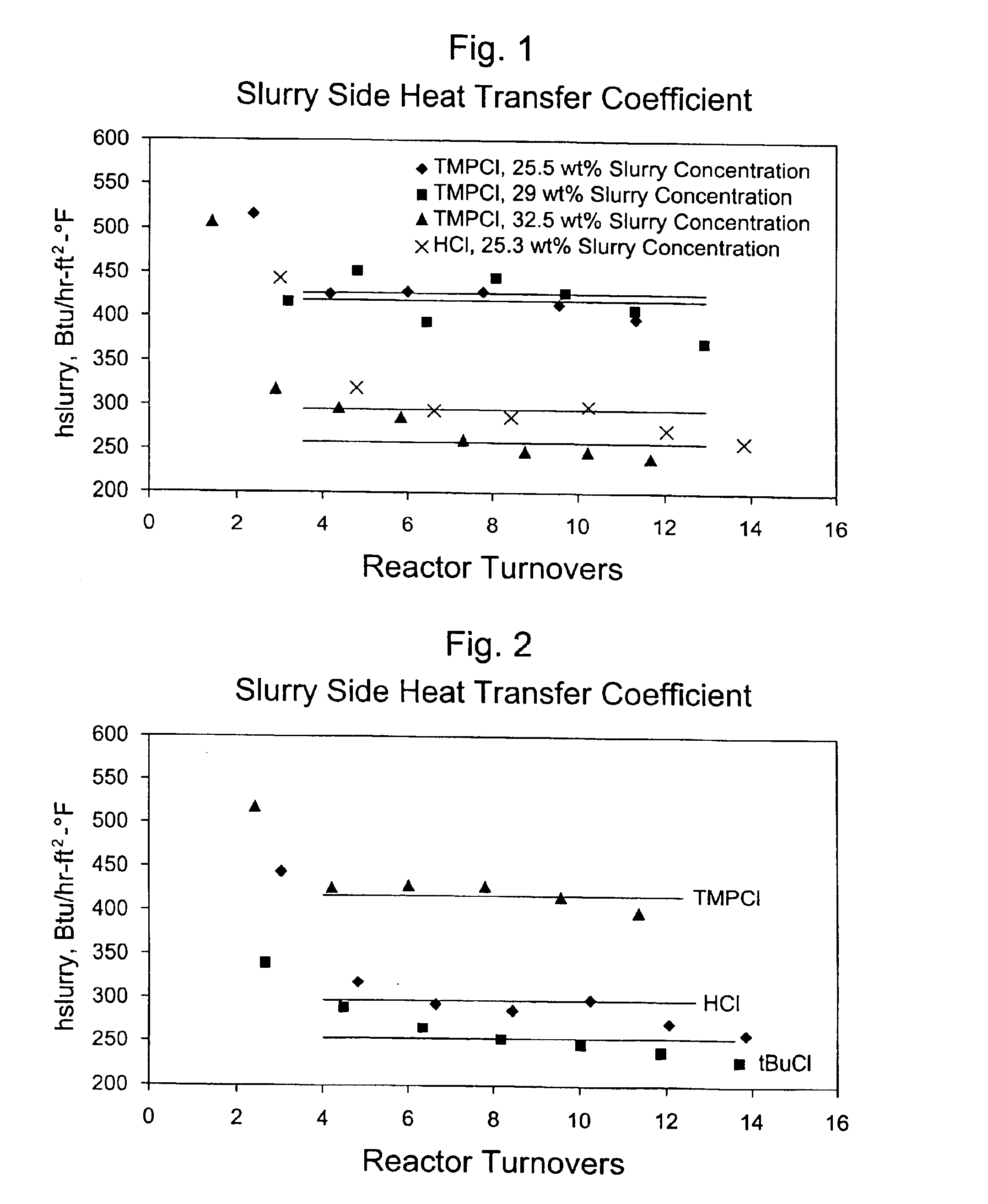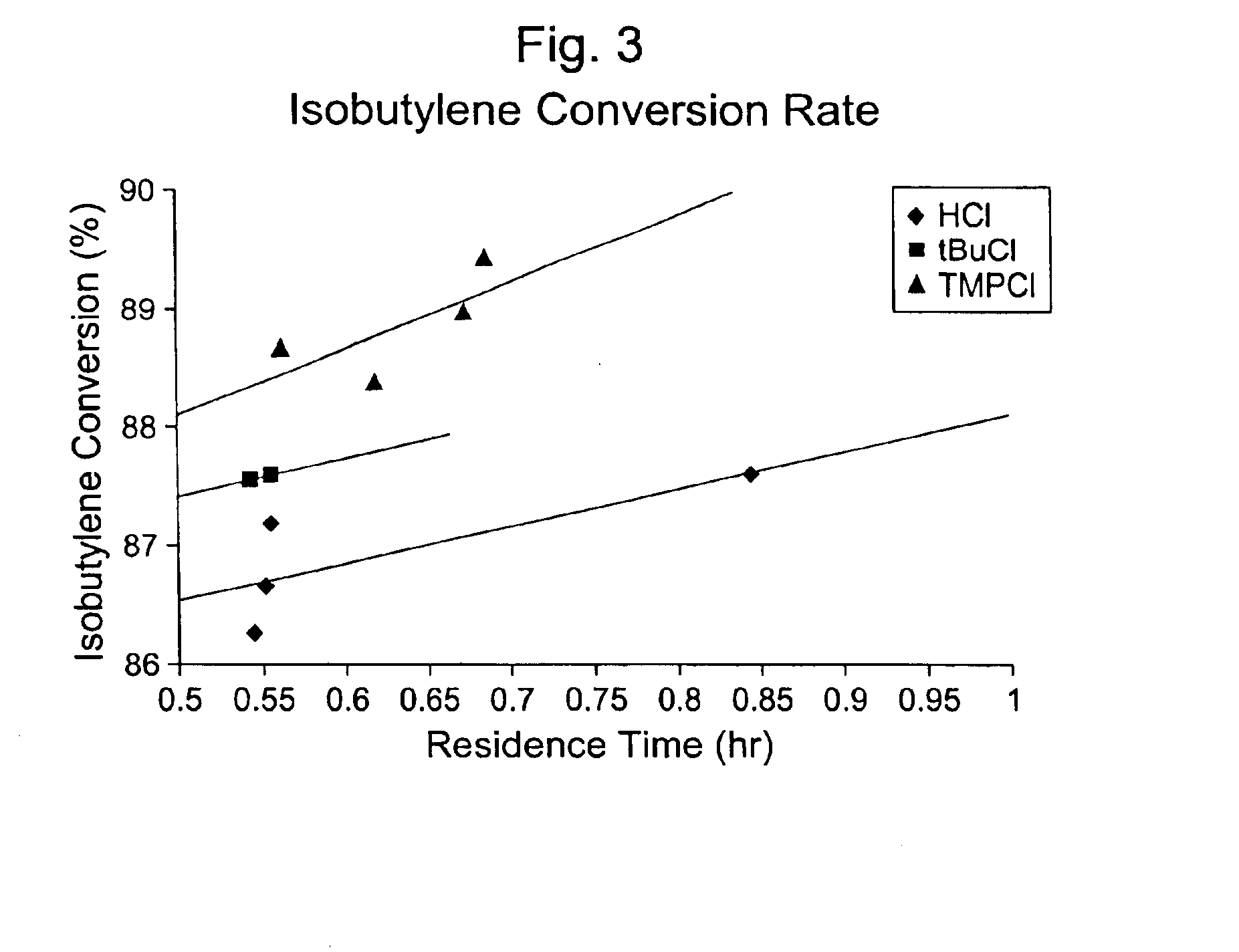Process for polymerizing cationically polymerizable monomers
a polymerization and monomer technology, applied in the field of improved, can solve the problems of limiting the practical slurry concentration that can be used in most reactors, increasing viscosity, and increasing the temperature of slurry, so as to improve the heat transfer rate, reduce the heat transfer coefficient of slurry, and improve the effect of heat transfer
- Summary
- Abstract
- Description
- Claims
- Application Information
AI Technical Summary
Benefits of technology
Problems solved by technology
Method used
Image
Examples
examples
[0057]Laboratory Experiments. The laboratory scale experiments highlight the unexpected nature of the invention exemplified in the plant scale experiments below. In these laboratory experiments, a feed blend of isobutylene (9.7 wt %) and isoprene (0.3 wt %) in methylchloride was chilled to −93° C. in a glass reactor contained in an inert atmosphere and polymerized in separate experiments by adding various amounts of Lewis acid and initiator as shown in Table 1. The initiator and Lewis acid concentrations present in each experiment are shown in the Table 1 as ppm. The Lewis acid and initiator was added to such a degree to the batch reactions as to achieve a 30 to 45% conversion of monomers as determined by the gravimetric yield. In all examples, the molecular weights (Mw) were determined by Gel Permeation Chromatography using a Waters Chromatograph operating at ambient temperature (30° C.). The HCl (Matheson) was used as a 260 ppm solution, and the tert-butylchloride (t-BuCl, Aldrich...
PUM
| Property | Measurement | Unit |
|---|---|---|
| heat transfer coefficient | aaaaa | aaaaa |
| heat transfer coefficient | aaaaa | aaaaa |
| heat transfer coefficient | aaaaa | aaaaa |
Abstract
Description
Claims
Application Information
 Login to View More
Login to View More - R&D
- Intellectual Property
- Life Sciences
- Materials
- Tech Scout
- Unparalleled Data Quality
- Higher Quality Content
- 60% Fewer Hallucinations
Browse by: Latest US Patents, China's latest patents, Technical Efficacy Thesaurus, Application Domain, Technology Topic, Popular Technical Reports.
© 2025 PatSnap. All rights reserved.Legal|Privacy policy|Modern Slavery Act Transparency Statement|Sitemap|About US| Contact US: help@patsnap.com



